
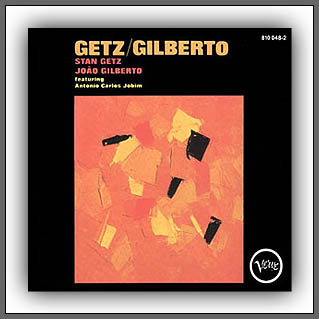
track 1. The Girl From Ipanema: track 2. Doralice: track 3. Para Machucar Meu Coracao: track 4. Desafinado: track 5. Corcovado: track 6. So Danco Samba: track 7. O Grande Amor: track 8. Vivo Sohando:
track 1. The Girl From Ipanema: track 2. Doralice: track 3. Para Machucar Meu Coracao: track 4. Desafinado: track 5. Corcovado: track 6. So Danco Samba: track 7. O Grande Amor: track 8. Vivo Sohando:
track 1. The Girl From Ipanema: track 2. Doralice: track 3. Para Machucar Meu Coracao: track 4. Desafinado: track 5. Corcovado: track 6. So Danco Samba: track 7. O Grande Amor: track 8. Vivo Sohando:
track 1. The Girl From Ipanema: track 2. Doralice: track 3. Para Machucar Meu Coracao: track 4. Desafinado: track 5. Corcovado: track 6. So Danco Samba: track 7. O Grande Amor: track 8. Vivo Sohando:
track 1. The Girl From Ipanema: track 2. Doralice: track 3. Para Machucar Meu Coracao: track 4. Desafinado: track 5. Corcovado: track 6. So Danco Samba: track 7. O Grande Amor: track 8. Vivo Sohando:
track 1. The Girl From Ipanema: track 2. Doralice: track 3. Para Machucar Meu Coracao: track 4. Desafinado: track 5. Corcovado: track 6. So Danco Samba: track 7. O Grande Amor: track 8. Vivo Sohando:
track 1. The Girl From Ipanema: track 2. Doralice: track 3. Para Machucar Meu Coracao: track 4. Desafinado: track 5. Corcovado: track 6. So Danco Samba: track 7. O Grande Amor: track 8. Vivo Sohando:
OnλinerNotes - JAZZ |
Getz/Gilberto Stan Getz & Joćo Gilberto
Verve
tenor sax - Stan Getz
| Liner Notes: _____________This collaboration between saxophonist Stan Getz (bio) and guitarist Joćo Gilberto (bio) came at seemingly the end of the bossa nova craze Stan Getz himself had sparked in 1962 with "Jazz Samba", his release with American guitarist Charlie Byrd. 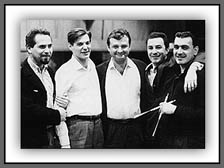 In fact, the story goes that Stan Getz had to push for the release of "Getz/Gilberto" since MGM did not want to compete with its own hit. In fact, the story goes that Stan Getz had to push for the release of "Getz/Gilberto" since MGM did not want to compete with its own hit._____"Getz/Gilberto", which featured composer Antonio Carlos Jobim (bio) on piano, not only yielded the hit "Girl from Ipanema" (sung by Astrud Gilberto, the guitarist's wife, who had no professional experience) but also "Corcovado" ("Quiet Night") - an instant standard, and the definitive version of "Desafinado". _____"Getz/Gilberto" spent 96 weeks in the charts and won four Grammys. It remains one of those rare cases in popular music where commercial success matches artistic merit. Bossa nova's "cool" aesthetic - with its understated rhythms, rich harmonies, and slightly detached delivery - had been influenced, in part, by cool jazz. _____Joćo Gilberto in particular was a Stan Getz fan. Stan Getz, with his lyricism, the bittersweet longing in his sound, and his restrained but strong swing, was the perfect fit. His lines, at once decisive and evanescent, focus the rest of the group's performance without overpowering. _____How many albums can boast a line-up as amazing as Stan Getz, Joćo Gilberto, and Antonio Carlos Jobim? Add in the fact that EVERY song is a keeper, and you have a truly amazing set. Stan Getz, possessor of the most beautiful tone in jazz, is hard to top. His playing evokes several emotions while staying true to the music at all times. Joćo Gilberto's guitar playing and singing were extremely influential, and his wife became a star with her effortless vocals on "The Girl from Ipanema" and "Corcovado." Antonio Carlos Jobim's sparse piano enhances the atmosphere of the album, and Tommy Williams and Milton Banana provide flawless rhythmic support.
____________Stan Getz was born in Philadelphia on February 2, 1927 and died in Malibu on June 6, 1991. Stan Getz started playing professionally at the age 15 in New York, and when he was only a year older made his first recording, as a sideman with Jack Teagarden. After playing in several important big bands, including those of Stan Kenton (1944-5) and Benny Goodman (1945-6), in 1947, 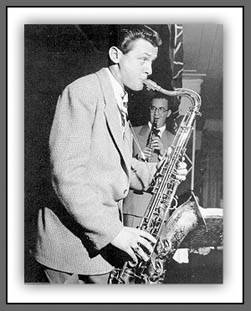 he joined "Woody Herman's Second Herd", where with his fellow saxophonists Zoot Sims, Serge Chaloff, and Herbie Steward he formed the famous reed section known as the 'Four Brothers'. In 1948 his ballad improvization on Ralph Burns's "Early Autumn" established him instantaneously as a major improviser in advanced swing style. After leaving Herman the following year Getz began to lead his own small groups and immediately, started to dominate jazz popularity polls for his instrument, as he did for many of the next 25 years. he joined "Woody Herman's Second Herd", where with his fellow saxophonists Zoot Sims, Serge Chaloff, and Herbie Steward he formed the famous reed section known as the 'Four Brothers'. In 1948 his ballad improvization on Ralph Burns's "Early Autumn" established him instantaneously as a major improviser in advanced swing style. After leaving Herman the following year Getz began to lead his own small groups and immediately, started to dominate jazz popularity polls for his instrument, as he did for many of the next 25 years._____In the mid-1950s Getz's career was interrupted by difficulties associated with his addiction to drugs. He spent the latter part of the decade working from Scandinavia, where he performed and recorded with local musicians and with other American expatriates such as Oscar Pettiford and Kenny Clarke. After returning to the USA in 1961 he attempted a comeback with the album "Focus", which included outstanding arrangements by Eddie Sauter. In the following year, with Charlie Byrd, he initiated a fusion of jazz and bossanova which captured the public's fancy and brought Getz a considerable amount of popular acclaim. The movement, however, was short-lived. Although Getz continued to lead jazz groups, and helped to launch the careers of Gary Burton, Steve Swallow, Chick Corea, Tony Williams, Airto Moreira, and other promising young musicians, he was out of sympathy with the free-jazz and rock movements, and he spent the years 1969 to 1972 in semi-retirement in Europe. _____His album "Captain Marvel" (1972) marked his return to playing jazz on a regular basis. From that time he has led a number of small groups with such important young musicians as _____Getz was an important exponent of his instrument and one of the supremely melodious improvisers in modern jazz, with a style deeply rooted in the swing period. Drawing his light, vibrato-less tone and basic approach from Lester Young, Getz developed a highly personal manner which, for its elegance and easy virtuosity, stood apart from the aggressive bop style of the late 1940s and 1950s. His justly celebrated performance on "Early Autumn" (1948), with its characteristically languorous melody and delayed rhythm, captured the imagination of many young white jazz musicians of the time and helped to precipitate the "cool" reaction to bop in the years that followed. Although ballad renditions of this sort were the basis of Getz's popularity, he was also among the few jazz musicians who could remain lyrical even at very fast tempos, thanks to a secure technical command of his instrument; performances such as "Crazy Chords" (1949), a breakneck rendering of the blues in all 12 keys, set new standards of virtuosity for jazz improvisation on the tenor saxophone. His fusion of jazz and bossanova, though not as novel as was claimed at the time, was instrumental in restoring jazz to a large popular following, and paved the way for the later influx of Brazilian music and instruments into jazz in the early 1970s.
____________Joćo Gilberto was born in Juazeiro, Bahia, Brazil on June 10, 1931. When talking about bossa nova, perhaps the signature pop music sound of Brazil, frequently the first name to come to one's lips is that of Antonio Carlos (Tom) Jobim. With songs like "The Girls From Ipanema" and "Desafindo", Jobim pretty much set the standard for the creation of the bossa nova in the mid-50s. However, as is often the case, others come along and take the genre in a new direction, reinventing through radical reinterpretation be it lyrically, rhythmically, or in live performance, making the music theirs. And if Jobim gets credit for laying the foundation of bossa nova, than the genre was brilliantly reimagined (and, arguably, defined) by the singer/songwriter and guitarist Joćo Gilberto. In his native country he is called 'O Mito' (The Legend), a deserving nickname, for since he began recording in late 1950s Joćo Gilberto, with his signature soft, near-whispering, croon, has set a standard few have equaled. _____Born in 1931 in Juazeiro in the northeastern section of Brazil known as Bahia, Joćo Gilberto seemed obsessed with music almost from the moment he emerged from the womb. His grandfather bought him his first guitar at age 14 (much to the dismay of Joao's father). Within a year, the result of near constant practicing, he was the leader of a band made up of school friends. During this time Joćo Gilberto was absorbing the rhythmic subtlety of the Brazilian pop songs of the day, while also taking in the rich sounds of swing jazz (Duke Ellington and Tommy Dorsey), as well _____Joćo Gilberto stayed in the band only a year. He was fired after the rest of the group could take no more of his lackadaisical attitude. Joćo Gilberto was frequently late for rehearsals and performances, and in a move reminiscent of American pop star Sly Stone, would occasionally not show up at all. After his dismissal from the group Joćo Gilberto lived a semi-nomadic life. For years he had no fixed address drifting from friend to friend and acquaintance to acquaintance living off their kindness rarely if ever contributing to the household expenses. Evidently Joćo Gilberto was such charming company that his emotional carelessness and fiscal apathy was never an issue - that and he had extremely patient and generous friends. It was during this underachieving bohemian period that Joćo Gilberto kept an extremely low profile. Instead of using his time with Garotos da Luna as a springboard for other recording and performing possibilities, he became apathetic, constantly smoking large quantities of marijuana, playing the odd club gig, and refusing work he considered beneath him (this included gigs at clubs where people talked during the performance). Although gifted with considerable talent as a singer and guitar player, it seemed as though Joćo Gilberto would fail to attain the success and notoriety he deserved if only due to apathy that verged on lethargy. _____After nearly a decade of aimlessness Joćo Gilberto joined forces with singer Luis Telles who encouraged Joćo Gilberto to leave Rio for a semi-bucolic life in the city of Porto Alegre. Luis Telles, who functioned as a combination public relations guru and sugar daddy, made sure the demanding Joćo Gilberto wanted for nothing and would concentrate on his music. It turned out to be a successful, if expensive strategy. Within a few months Joćo Gilberto (who at this point had given up his prodigious hemp consumption and was now partaking in nothing stronger than fruit juice) was the toast of Porto Alegre, the musician everyone wanted to see. It was also during _____True to form, however, Joćo Gilberto took the road less traveled by and after the success of his debut record and the two follow-up releases, "Amor, o Sorriso e a Flor" (1960) and "Joao Gilberto" (1961) he left Brazil to settle in the United States where he lived until 1980. During this period he recorded some amazing records working with saxophonist Stan Getz and recording music by older Brazilian songwriters such as Dorival Caymmi and Ary Barroso. He returned to Brazil in the early 80s and since then has worked with virtually every big name in Brazilian pop including Gilberto Gil, Caetano Veloso, Maria Bethania, Gal Costa, and Chico Buarque. He has never seen record sales like the aforementioned performers, but all of them regard him as a profound influence on their work. True to his image as enigmatic and eccentric, Joćo Gilberto lives a semi-reclusive lifestyle secure in the knowledge that, almost 40 years ago, he changed the course of Brazilian culture by making the bossa nova his music, as well as the music of Brazil. (...from John Dougan...)
____________Antonio Carlos Jobim was born on January 25th, 1927 in Rio de Janeiro and died on December 8th, 1994 in New York. It has been said that Antonio Carlos Brasileiro de Almeida Jobim was the George Gershwin of Brazil; and there is a solid ring of truth in that, for both contributed 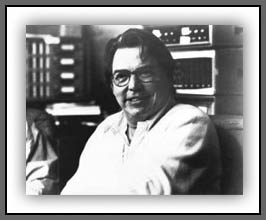 large bodies of songs to the jazz repertoire, both expanded their reach into the concert hall, and both tend to symbolize their countries in the eyes of the rest of the world. With their gracefully urbane, sensuously aching melodies and harmonies, Antonio Carlos Jobim's songs gave jazz musicians in the 1960s a quiet, strikingly original alternative to their traditional Tin Pan Alley source. large bodies of songs to the jazz repertoire, both expanded their reach into the concert hall, and both tend to symbolize their countries in the eyes of the rest of the world. With their gracefully urbane, sensuously aching melodies and harmonies, Antonio Carlos Jobim's songs gave jazz musicians in the 1960s a quiet, strikingly original alternative to their traditional Tin Pan Alley source._____Antonio Carlos Jobim's roots were always planted firmly in jazz; the records of Gerry Mulligan, Chet Baker, Barney Kessel and other West Coast jazz musicians made an enormous impact upon him in the 1950s. But he also claimed that the French impressionist composer Claude Debussy had a decisive influence upon his harmonies, and the Brazilian samba gave his music a uniquely exotic rhythmic underpinning. As a pianist, he usually kept things simple and melodically to the point with a touch that reminds some of Claude Thornhill, but some of his records show that he could also stretch out when given room. His guitar was limited mostly to gentle strumming of the syncopated rhythms, and he sang in a modest, slightly hoarse yet often hauntingly emotional manner. _____Born in the Tijuca neighborhood of Rio, Antonio Carlos Jobim originally was headed for a career as an architect. Yet by the time he turned 20, the lure of music was too powerful, and so he started playing piano in nightclubs and working in recording studios. He made his first record in 1954 backing singer Bill Farr as the leader of "Tom and His Band" (Tom was Jobim's lifelong nickname), and he first found fame in 1956 when he teamed up with poet Vinķcius de Moraes to provide part of the score for a play called "Orfeo do Carnaval" (later made into the famous film Black Orpheus). In 1958, the then-unknown Brazilian singer Joćo Gilberto recorded some of Antonio Carlos Jobim's songs, which had the effect of launching the phenomenon known as bossa nova. Antonio Carlos Jobim's breakthrough outside Brazil occurred in 1962 when Stan Getz and Charlie Byrd scored a surprise hit with his tune "Desafinado" - and later that year, he and several other Brazilian musicians were invited to participate in a Carnegie Hall showcase. Fueled by Antonio Carlos Jobim's songs, the bossa nova became an international fad, and jazz musicians jumped on the bandwagon recording album after album of bossa novas until the trend ran out of commercial steam in the late '60s. _____Antonio Carlos Jobim himself preferred the recording studios to touring, making several lovely albums of his music as a pianist, guitarist and singer for Verve®, Warner Bros®., Discovery®,
|
|
OnλinerNotes - JAZZ | |
|
|
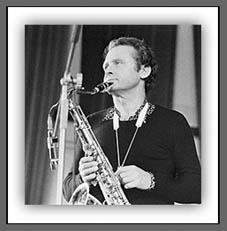 JoAnne Brackeen. In the mid-1980s he worked regularly in the San Francisco Bay area and taught at Stanford University.
JoAnne Brackeen. In the mid-1980s he worked regularly in the San Francisco Bay area and taught at Stanford University.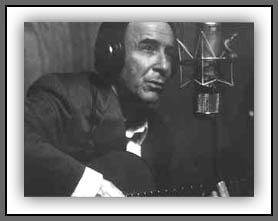 as the light opera singing of Jeanette MacDonald. At 18, Joćo Gilberto gave up on his small town life and headed to Bahia's largest city, Salvador, to get a foothold in the music industry performing on live radio shows. Although he was given the opportunity to sing, instant stardom was not in the offing, but his brief appearances on the radio brought him to the attention of Antonio Maria who wanted Joćo Gilberto to become the lead singer for the popular radio band Garotos da Lua (Boys From the Moon) and moved to Rio de Janiero.
as the light opera singing of Jeanette MacDonald. At 18, Joćo Gilberto gave up on his small town life and headed to Bahia's largest city, Salvador, to get a foothold in the music industry performing on live radio shows. Although he was given the opportunity to sing, instant stardom was not in the offing, but his brief appearances on the radio brought him to the attention of Antonio Maria who wanted Joćo Gilberto to become the lead singer for the popular radio band Garotos da Lua (Boys From the Moon) and moved to Rio de Janiero.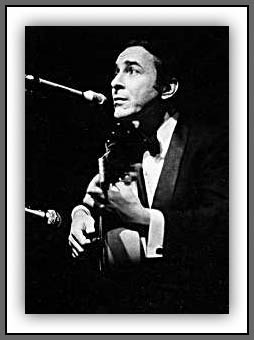 this extended apprenticeship that Joćo Gilberto perfected his unique vocal style and guitar playing. So breathy and nasally it is almost defies description, in many ways he uses all the things one is taught not to do as a singer and has made them into an instantly recognizable style. Not even established crooners such as Bing Crosby and Perry Como sang more quietly or with less vibrato. This, along with his rhythmically idiosyncratic approach to playing the guitar - an intensely syncopated plucking of the strings that flowed with his singing - made for some exhilarating music and by the time of his first record, "Chega de Saudade" (1959), Joćo Gilberto became widely known as the man who made bossa nova what it is.
this extended apprenticeship that Joćo Gilberto perfected his unique vocal style and guitar playing. So breathy and nasally it is almost defies description, in many ways he uses all the things one is taught not to do as a singer and has made them into an instantly recognizable style. Not even established crooners such as Bing Crosby and Perry Como sang more quietly or with less vibrato. This, along with his rhythmically idiosyncratic approach to playing the guitar - an intensely syncopated plucking of the strings that flowed with his singing - made for some exhilarating music and by the time of his first record, "Chega de Saudade" (1959), Joćo Gilberto became widely known as the man who made bossa nova what it is.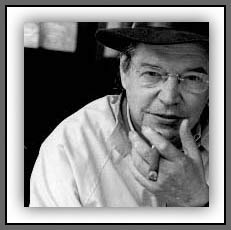 A&M®, CTI®, and MCA® in the '60s and '70s, and Verve again in the last decade of his life. Early on, he started collaborating with arranger / conductor Claus Ogerman, whose subtle, caressing, occasionally moody charts gave his records a haunting ambience. When Brazilian music was in its American eclipse after the '60s, a victim of overexposure and the burgeoning rock revolution, Antonio Carlos Jobim retreated more into the background, concentrating much energy upon film and TV scores in Brazil. But by 1985, as the idea of world music and a second Brazilian wave gathered steam, Antonio Carlos Jobim started touring again with a group containing his second wife Ana Lontra, his son Paulo, daughter Elizabeth Jobim and various musician friends. At the time of his final concerts in Brazil in September 1993 and at Carnegie Hall in April 1994 (both available on Verve®), Antonio Carlos Jobim at last was receiving the universal recognition he deserved, and a plethora of tribute albums and concerts followed in the wake of his sudden death in New York City of heart failure. Antonio Carlos Jobim's reputation as one of the great songwriters of the century is now secure, nowhere more so than on the jazz scene where every other set seems to contain at least one bossa nova. (...fom
A&M®, CTI®, and MCA® in the '60s and '70s, and Verve again in the last decade of his life. Early on, he started collaborating with arranger / conductor Claus Ogerman, whose subtle, caressing, occasionally moody charts gave his records a haunting ambience. When Brazilian music was in its American eclipse after the '60s, a victim of overexposure and the burgeoning rock revolution, Antonio Carlos Jobim retreated more into the background, concentrating much energy upon film and TV scores in Brazil. But by 1985, as the idea of world music and a second Brazilian wave gathered steam, Antonio Carlos Jobim started touring again with a group containing his second wife Ana Lontra, his son Paulo, daughter Elizabeth Jobim and various musician friends. At the time of his final concerts in Brazil in September 1993 and at Carnegie Hall in April 1994 (both available on Verve®), Antonio Carlos Jobim at last was receiving the universal recognition he deserved, and a plethora of tribute albums and concerts followed in the wake of his sudden death in New York City of heart failure. Antonio Carlos Jobim's reputation as one of the great songwriters of the century is now secure, nowhere more so than on the jazz scene where every other set seems to contain at least one bossa nova. (...fom